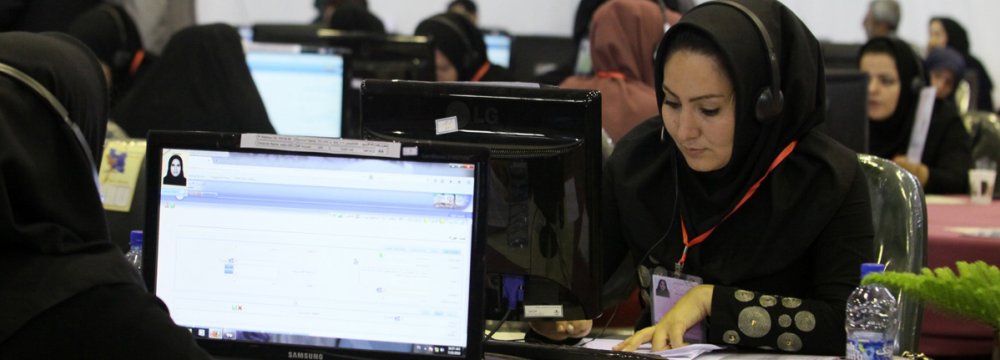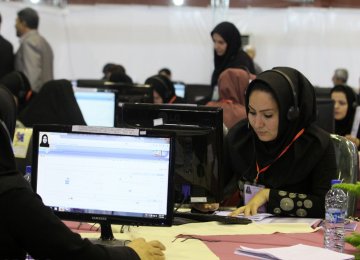Unemployment among Iranian women has increased in the past decade, from 4% in 1996 to 20% in 2016. Women’s joblessness has jumped despite their higher education levels. Statistics indicate that 34% of women who are graduates and above do not have work compared to 29% men.
Joblessness has emerged as what many call a “tsunami” for the state and governments over the past decades. Despite some improvement in economic growth rates and the overall economy, the present government has been unable to create jobs for millions of youth, especially women and university graduates.
The long dole queues have indeed become a strong weapon in the arsenal of Rouhani’s powerful political opponents who hardly ever miss an opportunity to use it against his economic policies.
By the same token, respected economic experts and social scientists have warned the president and his senior aides that they need to navigate their economic roadmap in a way that puts the high and rising number of young people on the payroll. Failing to create jobs, many say, is a luxury the government simply cannot afford.
Masoud Nili, a senior economist and advisor to President Hassan Rouhani says “Unemployment among three groups is reaching crisis level, namely the youth, women, and people with higher education.”
Speaking at an international workshop in Tehran on labor market studies earlier this month, he said the unemployment rate among these groups exceeds the national average rate, the Persian-language economic weekly Tejarat Farda, a sister publication of the Financial Tribune , reported.
Data from the Statistical Center of Iran shows that the rate of ‘economic participation’ among women between the age of 25-29 has increased from 20% to 25% between 2005 to 2016.
However, experts insist that the higher participation rate does not necessarily mean that their employment rate has also increased. The main reason behind the higher figure is that a growing number of women graduates are hunting for jobs.
The participation rate is a measure of the active labor force. It refers to the number of people who are either employed or are actively looking for work.
According to a report released by SCI in 2015, almost half of all students in the country’s universities are women (women account for 70% of science and engineering students).
Around 17% of all university students are employed; however among those who are employed 79% are males. In other words, barely 21% of students who manage to find a job are females.
Misplaced Beliefs
The Minister of Cooperatives, Labor, and Social Welfare Ali Rabiei, blames “the traditional and dominant role of men in generating income in urban and rural households” as the main reason behind the relatively high unemployment rates among women in Iran.
Economic experts and women rights activists have a similar opinion and say wrong cultural and traditional beliefs are largely responsible for low demand for female labor.
Even when employed, women often receive unequal remuneration for work done equal in value to men and may also be overworked and underpaid, in many cases even without having any contractual agreement.
Data has it that an estimated 12% of Iranian households have a woman as the main breadwinner. “Even in many families where data indicate a man is the head, women are the main contributors to the household economy,” Zahra Afshari, an economist and faculty member at Al-Zahra University wrote for Tejarat Farda.
SCI has put the first quarter unemployment rate for women (both educated and uneducated) at 20.8%, nearly double for men (10.6%).
Of the total female workforce, 50% are experts in various fields including teaching, 20% are active in the industrial sector, 11% are office workers, 10% are in sales, 4% hold executive managerial posts, and 5% are in other sectors, says a report by the Iran Entrepreneurship Association.






Add new comment
Read our comment policy before posting your viewpoints